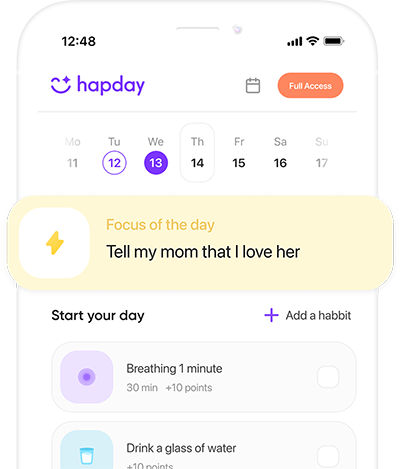So, what’s the deal with ADHD, anyway? It’s something that impacts a whole lot of people globally—not just kids, but adults too. You’ve probably heard it mainly described through impulsive behaviors, hyperactivity, and that fancy word ‘inattention.’ And it can make the daily grind a bit more complicated, right? Now, especially for Gen Z and Millennial women juggling life’s demands, meditation is popping up as a potential go-to. Some studies – like, I can’t remember which one exactly, but it’s somewhere out there – even suggest meditation works wonders for ADHD by honing focus and calming the mind. Sounds pretty great, doesn’t it?
Table of Contents
- Understanding ADHD and Its Challenges
- The Science Behind Meditation and ADHD
- Techniques for Focus and Calm
- Benefits of Meditation for ADHD
- Incorporating Meditation into Daily Life
- Addressing Common Challenges
- Conclusion – Wrapping Up the Think Space
Understanding ADHD and Its Challenges
Let’s put some numbers on the board. About 4.4% of folks in the U.S. are dealing with this in adulthood. And here’s a kicker: women often fly under the radar when it comes to ADHD diagnoses. Why? Probably because they show up differently compared to men – sneaky, huh? Sure, meds and therapy do the trick for many, but tossing in a bit of meditation might just be that cherry on top addressing both cognitive hurdles and emotional chaos in ADHD.
The Science Behind Meditation and ADHD
Here’s the scoop – meditation has its roots deep in mindfulness. It’s about zoning in on one thing or, well, nothing… depending on how you look at it. The technical folks say meditation can actually change your brain—cool, right? They’ve noticed more gray matter popping up in places like the prefrontal cortex, dealing with things like attention and executive function. This study from Psychiatry Research: Neuroimaging gives us the data to back it up. So, what’s that mean for folks with ADHD? It means that maybe, just maybe, meditation’s not just another fad.
Techniques for Focus and Calm
- Mindfulness Meditation
Mindfulness is kinda about noticing the ‘now’, without beating yourself up about it. For someone with ADHD, this sort of practice helps become more aware of distractions and reel in focus. You could start small—just park yourself on a chair for a few minutes each day. Take a deep breath, or ten, and when your mind drifts to what’s for dinner, bring it back—no worries.
- Body Scan Meditation
This one’s like an internal roll call for the body. Lie down, close your eyes, and just notice. Feel your toes getting all the attention and work your way up. It’s almost like— I can’t believe I’m saying this— a mindful elevator ride in your own body. Who would’ve thought paying attention to each body part would chill it out?
- Guided Imagery
You’ve probably heard about this— visualizing a place that brings all the calm vibes. Find an app or throw on a YouTube vid for a guided imagery session. Picture a peaceful beach, the rustle of the forest, or even floating on clouds. Yup, it’s as nice as it sounds.
Benefits of Meditation for ADHD
What’s in it for someone with ADHD? Well, a pretty good bundle, it turns out:
- Improved Focus and Attention: So there’s this research in the Journal of Attention Disorders that backs it up—adults who mingled with mindfulness noticed their attention getting a boost.
- Emotional Regulation: It’s not just the focus that gets sharper—in fact, meditation helps people better handle emotions. With less activity in our brain’s stress headquarters—hello amygdala—you feel a little more in control, you know?
- Reduced Stress and Anxiety: Bring in regular meditation, and cortisol, that pesky stress hormone, takes a dive. Less stress means life is, well, less stressful!
Incorporating Meditation into Daily Life
How’d you make this a habit, you might ask? Consistency is the secret sauce. Here’s how you could get started:
- Start Small: Kick off with just five minutes. Yes, five. Sounds doable, right?
- Set a Schedule: Find a time slot that works—be it sunrise or nightfall—and stick with it.
- Create a Meditation Space: Make a corner yours with little distractions. A pillow here, soothing music there. Boom.
- Use Technology Mindfully: Tap into apps like Headspace or Calm; they’re like personal assistants in your meditation journey.
Addressing Common Challenges
No need to sugarcoat it—people with ADHD encounter unique bumps on the meditation road. But there are ways around them:
- Difficulty Sitting Still: Who says you have to? Walking meditation exists! Feel the ground beneath every step.
- Racing Thoughts: Treat your thoughts like they’re nothing more than clouds passing by. Maybe they’ll visit tomorrow again, or maybe they won’t.
- Inconsistent Practice: Link it to something you already do—like brushing your teeth. Simple reminders work wonders.
Conclusion – Wrapping Up the Think Space
Look, meditation isn’t just this woo-woo outpouring. It’s a legitimate way to manage ADHD and promote both focus and tranquility. Gen Z and Millennial women, especially, you folks are steering your own paths. Meditation, however you take it on, stands like a steadfast ally.
Curious about how to start? Dive into the world of guided meditations with Hapday.
—
Whew—there we have it. Quite a journey, wasn’t it?

